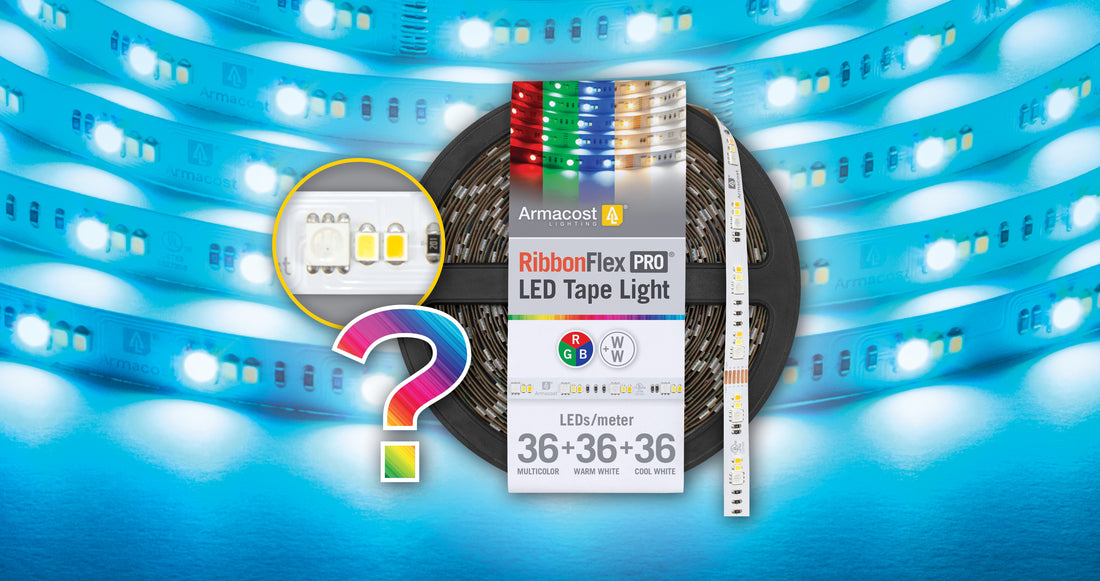When shopping for LED strip light, there are a lot of terms that may seem new. Some that are commonly seen on multicolor LED strips are RGB, RGB+W, and RGB+WW. So what exactly does all of this mean?
Multicolor and white LED chips
In order to create different colors, LED tape light uses a diode or chip that produces red, green, and blue colors and then blends them together to create the spectrum of other colors. Traditionally this was done using a single LED chip, but it had limitations, such as an inability to produce a clean white light like 3000K. In order to solve this, an additional LED was added to some multicolor led strips that was dedicated to only white light, hence the name RGB+W. So the “RGB” means that the led tape light can produce multiple colors and the “+W” indicates it has a dedicated white LED that provides a pure, clean white light.

Adding tunable white
But the white light in an RGB+W strip light is limited to only one color temperature, such as 3000K or 4000K. If a different white color temperature is desired, it is necessary to blend the white light as well. In order to do this, a second white LED is added to the LED tape light, which results in RGB+WW. Again, the RGB chip produces colors, and now one white chip is tuned to a very low, warm color temperature such as 2700K and the other white chip is tuned to a very high, cooler color temperature such as 5000K. Just as the RGB LED blends Red, Green, and Blue to make other colors, the 2700K and 5000K white chips blend together to produce a full range of white color temperatures. RGB+WW is sometimes referred to as Multicolor + Tunable White. It may also be called RGB+CCT, with the CCT used as a descriptor of the color tuning capability.

Wiring channels
With each additional LED that is added to the LED strip light, it requires the addition of another “channel” on the tape light. This is most readily visible in the number of copper pads that are on the strip light. An RGB strip typically has 4 channels or copper pads, one for the positive voltage, and then one for Red, Blue, and Green. When a white chip is introduced, RGB+W, the number of channels increases to 5, and the introduction of the second white LED to get RGB+WW results in 6 channels.
This is important when choosing accessories like controllers and connectors, as these accessories will need to have the same number of channels as the tape light being used.
Armacost Lighting sells a full range of RGB, RGB+W, and RGB+WW strip lights and LED strip light kits to meet the goals of any project. For more information or for help with your project, please reach out to our Armacost Lighting Customer Support team.





